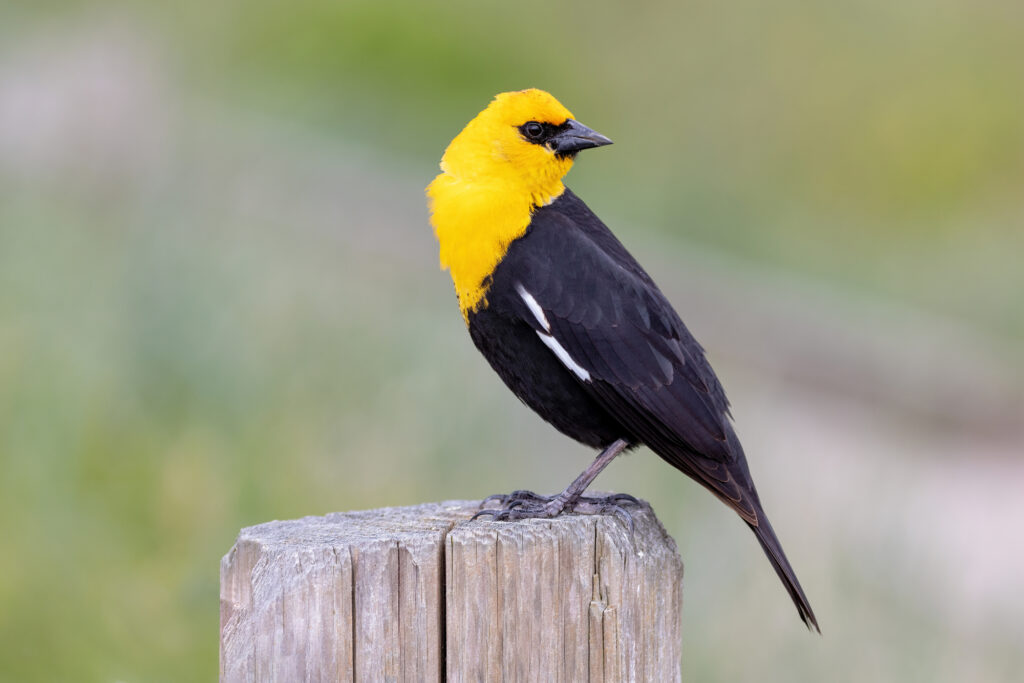If you bring up blackbirds in birdwatching communities, you’re bound to get some diverse reactions.
For many Kansans, the Red-winged blackbird was one of the first birds they learned to identify when they were younger. People often love to spot brightly colored orioles and large grackles with their flashy tails.
But other birdwatchers struggle with blackbirds because many species are aggressive and noisy. They are capable of scaring away the songbirds many try to attract to their feeders.
Not all black-colored birds are blackbirds, and not all blackbirds are aggressive. Being able to recognize different varieties will help you know whether you want to repel or attract these birds to your backyard.
What kinds of blackbirds will you spot in Kansas? While there are dozens of blackbird species in the US, about 15 regularly spend time in Kansas. Sometimes, a few other species will make their way within Kansas’s borders, but you’re most likely to see these 15 we have put on our list.
All of the blackbirds on our list are members of the Icteridae family, even though they come in different shapes, sizes, and colors.
12 Blackbirds You’ll See in Kansas
Red-winged Blackbird
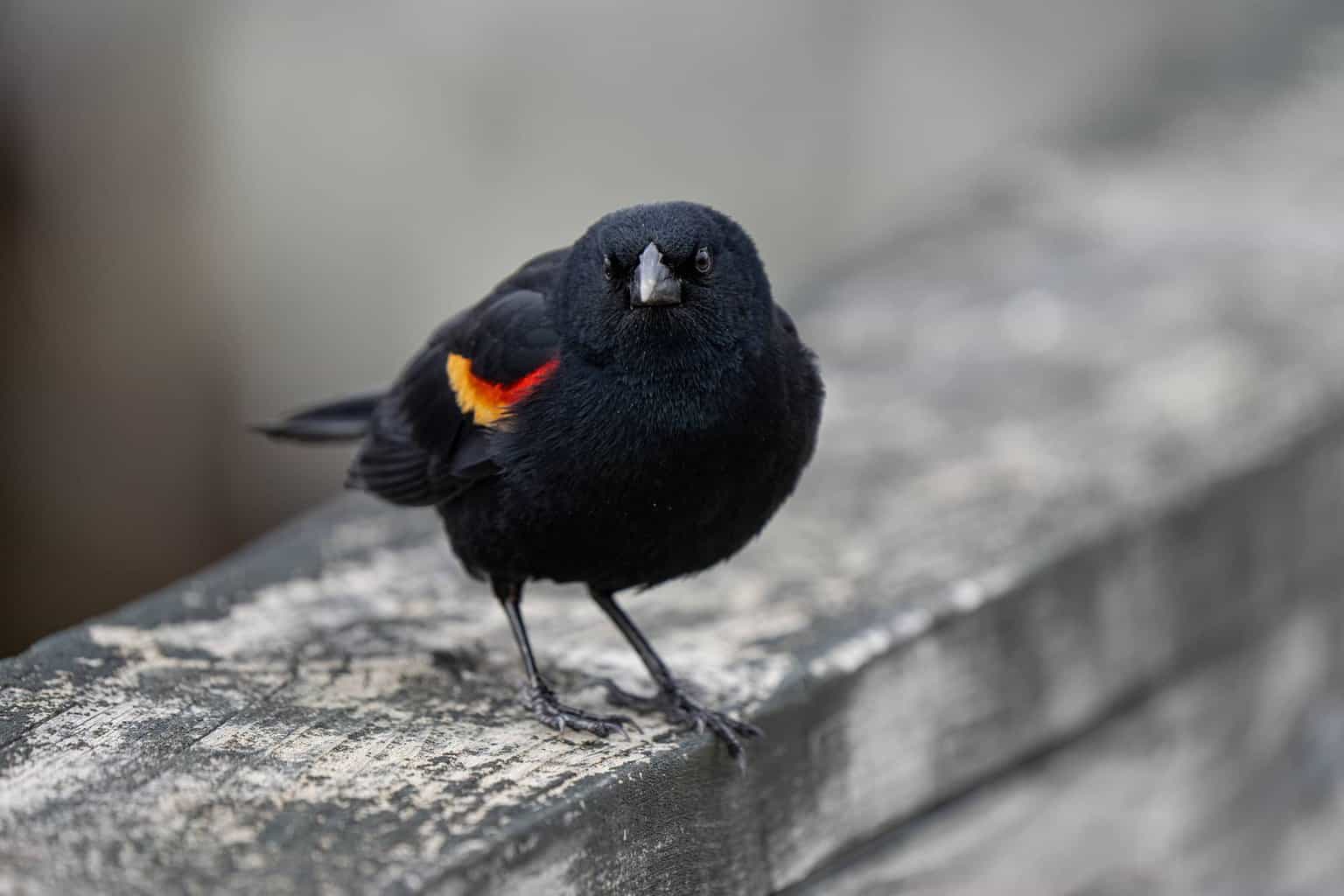
- Agelaius phoeniceus
- Length: 22–24 cm (8.7–9.4 in)
- Weight: 64 g (2.3 oz)
- Wingspan: 31—40 cm (12—16 in)
Color pattern: Males are glossy black and have a flash of red and orange at the tops of their black wings. Females, which look a bit like large sparrows, are brown and cream, with a lighter colored head than body. Females have a dark brown stripe running from behind their eyes to the back of their heads.
Even children can spot Red-winged blackbirds if they are shown what to look for. The bright red and orange on the wings of a male blackbird are easy to spot, especially because this bird is so common throughout Kansas.
In the summer, these territorial birds roost in deciduous trees, often taking over shady trees in neighborhoods and parks. They defend their nests with tenacity—being aggressive birds—sometimes even dive-bombing people who are just walking by!
You will also find red-winged blackbirds sharing territory with other birds, including grackles and cowbirds.
European Starling
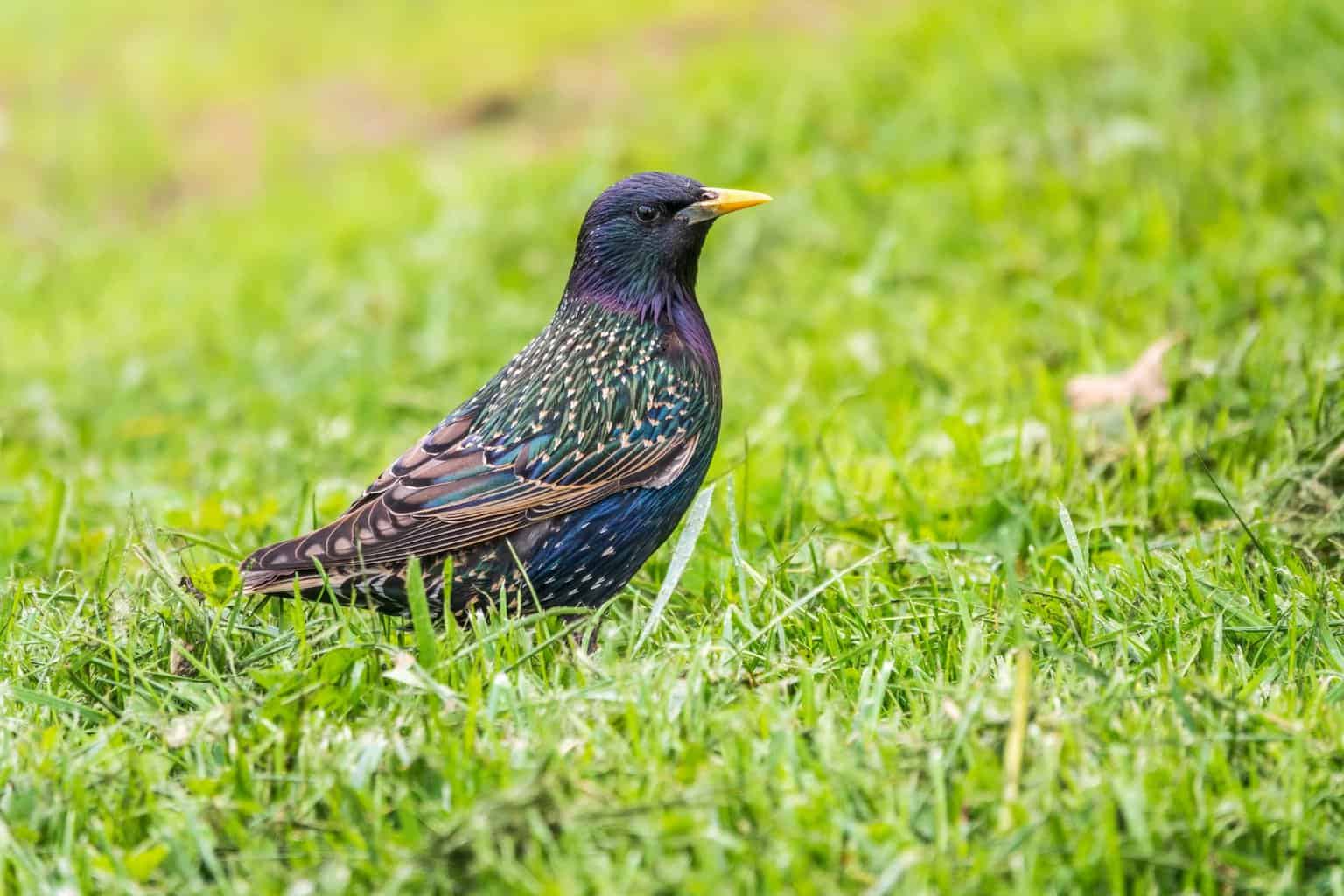
- Sturnus vulgaris
- Length: 19–23 cm (7.5–9.1 in)
- Weight: 58–101 g (2.0–3.6 oz)
- Wingspan: 31–44 cm (12–17 in)
Color patterns: Starlings are dark brown or glossy black, with iridescent feathers that are mottled with black spots, or sometimes beige-brown. Unlike species with more differentiation between the sexes, male and female European starlings are similar in appearance.
As individuals, European starlings are not much of a problem. But when they gather by the hundreds or even thousands, they cause a lot of problems! In fact, starlings are often described as a pest or nuisance birds. They are very aggressive.
Starlings are unprotected by the Migratory Bird Treaty Act. After being introduced into North America in 1890, they have now spread throughout the continent and are plentiful in Kansas.
These are social birds who live in large groups for much of the year. During the breeding season, they will live independently to raise their young.
They are tenacious, adaptable, and aggressive birds, often out-competing other birds in the area where they live.
Because they are a threat to native songbirds in Kansas, many people do what they can to deter European starlings from their properties.
Brown-Headed Cowbird
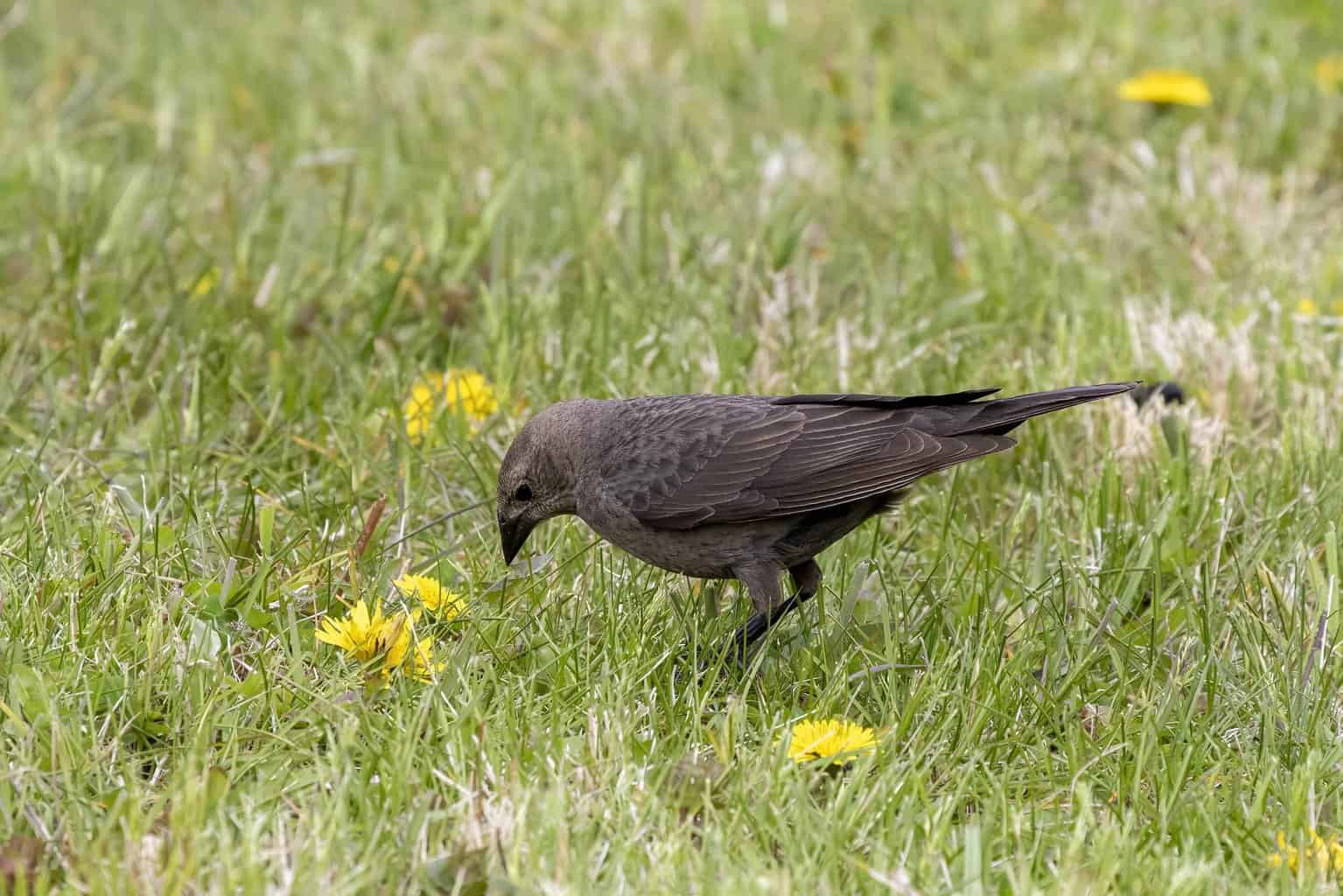
- Molothrus ater
- Length: 16–22 cm (6.3–8.7 in)
- Weight: 30–60 g (1.1–2.1 oz)
- Wingspan: 36 cm (14 in)
Color patterns: Brown-headed cowbirds have finch-shaped heads and are smaller than most icterids. Females are dullish-grey in color, whereas males are iridescent, glossy black. Both males and females have brown heads and dark breasts.
Cowbirds are clever creatures! Brown-headed cowbirds are known best for their unique trait of brood parasitism. Instead of raising their own young, they behave as nest parasites and lay their eggs in other birds’ nests.
Generally, the other birds don’t recognize the eggs as different from their own, and they raise the babies with their own hatchlings.
After generations of behavioral evolution, brown-headed cowbirds no longer build their own nests at all. They will lay about 40 eggs in a single season, and around 3% of those will make it to adulthood.
Bronzed Cowbirds
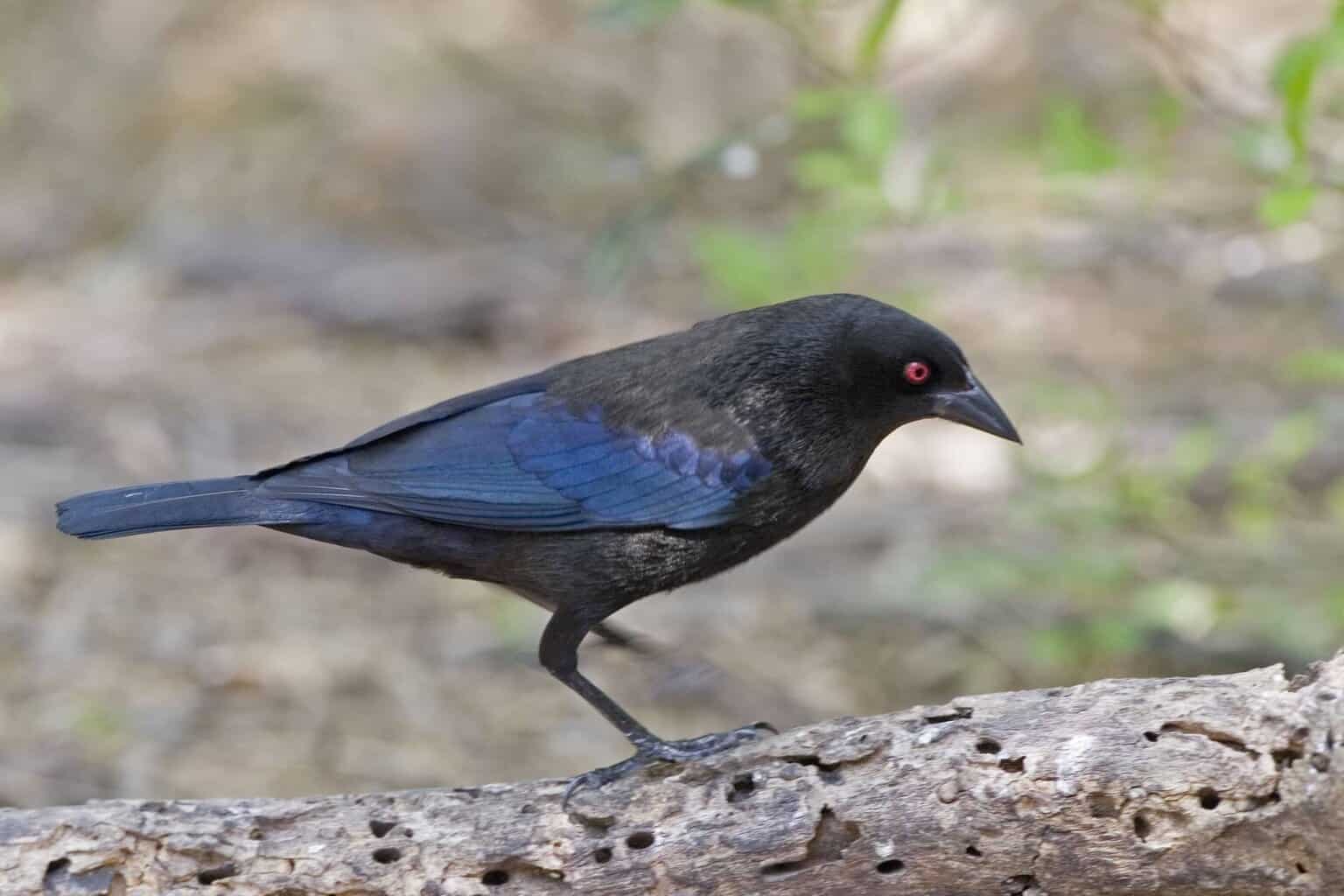
- Molothrus aeneus
- Length: 16–22 cm (6.3–8.7 in)
- Weight: 30–60 g (1.1–2.1 oz)
- Wingspan: 36 cm (14 in)
Color patterns: Bronzed Cowbirds have a similar appearance to brown-headed cowbirds, but with shorter tails and longer bills. Both males and females have orangeish eyes, but males can be recognized by their red eyes during mating season. Female feathers are dull black, and males have more sheen.
Bronzed cowbirds are another nest parasite! This behavior can cause problems for other birds in Kansas, especially Hooded Orioles.
These birds are quite new to Kansas and are still considered to be rare. The first bronzed cowbirds were spotted in Kansas in 2018.
Brewer’s Blackbird
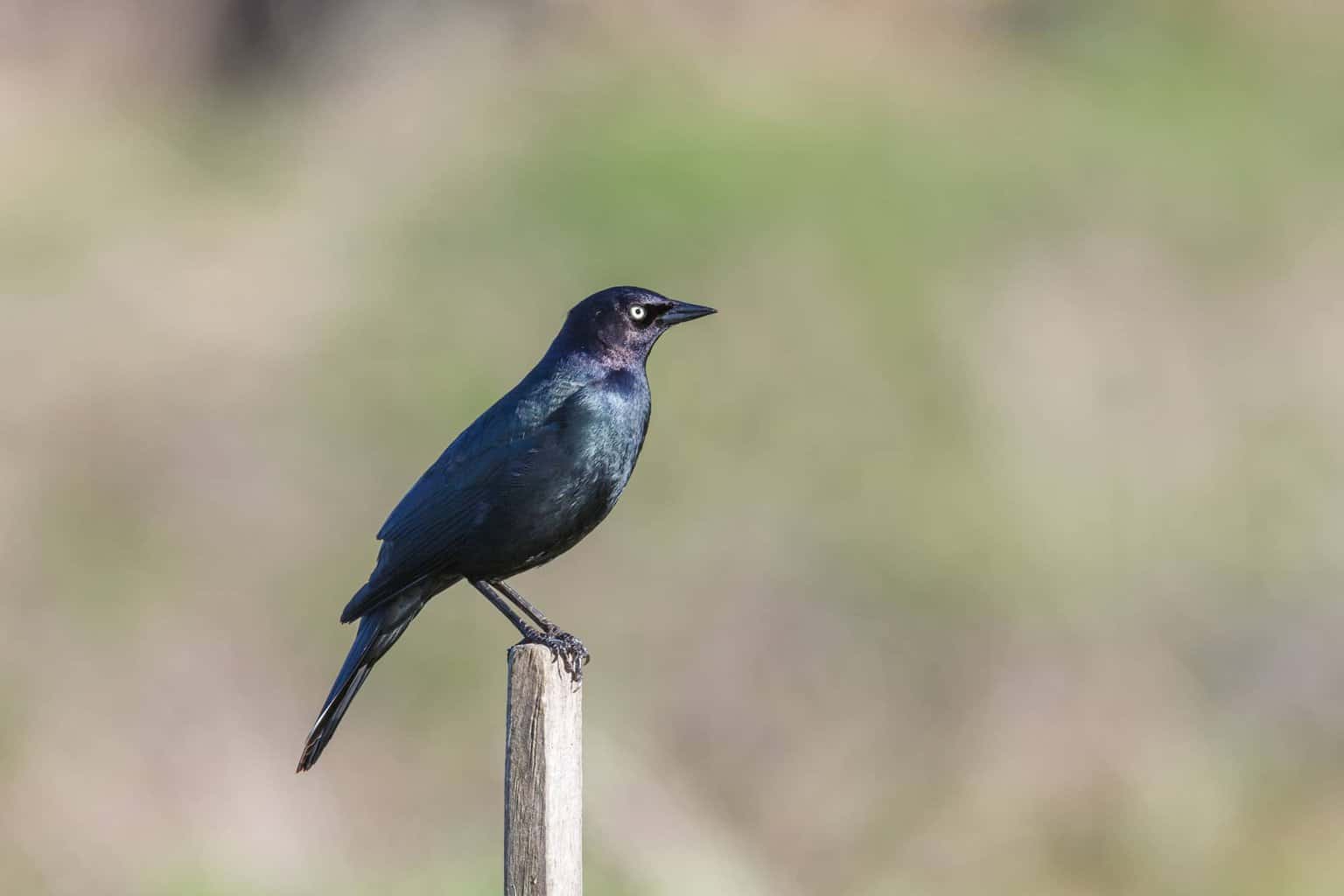
- Euphagus cyanocephalus
- Length: 20—25 cm (8–10.3 in)
- Weight: 63 g (2.2 oz)
- Wingspan: 39 cm (15.5 in)
Color patterns: Male Brewer’s Blackbirds have iridescent feathers. In different lighting, they can have bright blue heads or ones that are blueish-purple. Their bodies, on the other hand, are greenish. Male Brewer’s blackbirds have black bills and legs. Females are duller in color—with lighter blue heads—and have wings and tails that are darker than the rest of the body.
Brewer’s blackbirds are rare in Kansas. You have a better chance of spotting one in the winter months.
They are resourceful birds who adapt well to urban environments and human activity. In warmer winter climates, you might spot a Brewer’s Blackbird darting between tables and chairs at an outdoor restaurant.
In Kansas, they will spend time in feedlots and on farms, where food is plentiful.
Yellow-Headed Blackbird
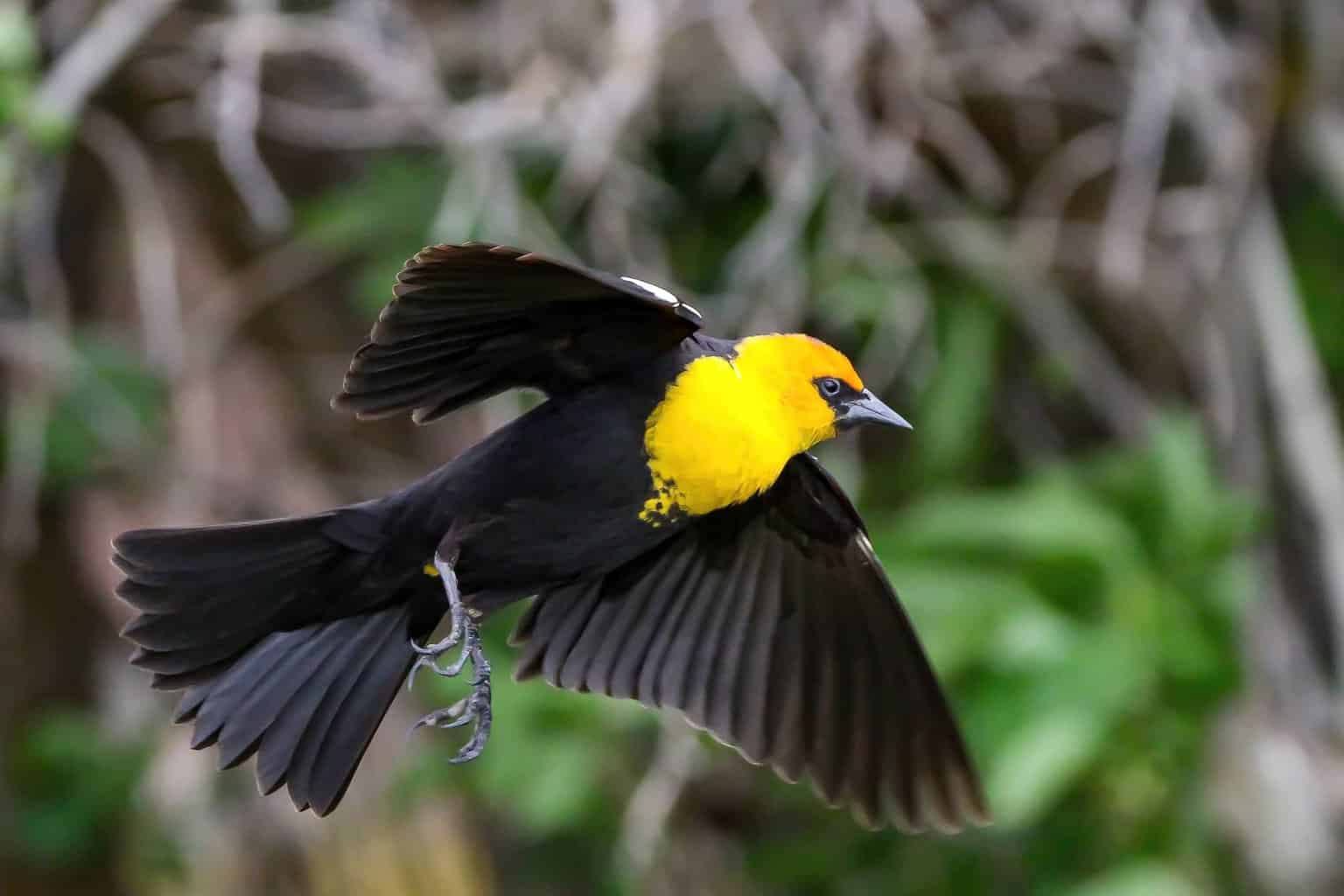
- Xanthocephalus xanthocephalus
- Length: 21—26 cm (8.3–10.2 in)
- Weight: 44—100 g (1.6—3.5 oz)
- Wingspan: 42—44 cm (16.5—17.3 in)
Color patterns: Male yellow-headed blackbirds are black in color, with a large yellow head and yellow chest. Females have a yellow head, too, but it is not as bright. Yellow-headed blackbirds are stout birds, with long tails and sharp bills.
The scientific name of the Yellow-headed blackbird, “Xanthocephalus xanthocephalus,” comes from two Greek words: (xanthous) and head (cephalus). Their flashy yellow head is much larger than other blackbird heads.
Even though it can be fun to see these brightly colored birds, it is less fun to hear them sing.
Even the Audubon Society has described their song as a “hoarse, harsh scraping.”
Yellow-headed blackbirds nest on their own during the breeding season. For the rest of the year, they will be part of a large group, sometimes reaching thousands in number.
Common Grackle
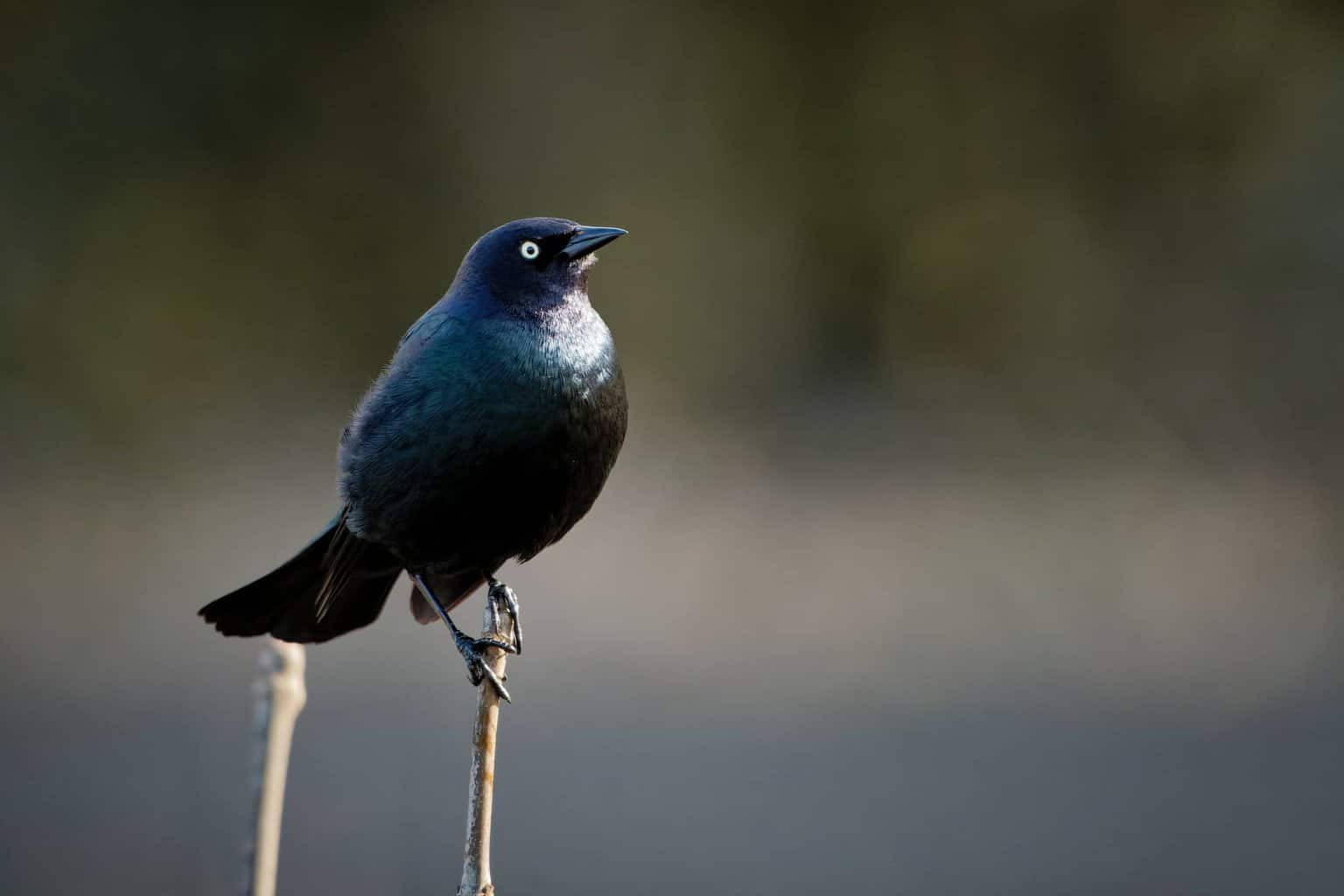
- Quiscalus quiscula
- Length: 28—34 cm (11—13 in)
- Weight: 74–142 g (2.6–5.0 oz)
- Wingspan: 36–46 cm (14–18 in)
Color pattern: When you get close to a common grackle, you can spot their glossy purple heads and their bronze-colored, iridescent body feathers. Females are not quite as glossy, but both sexes are interesting to spot.
Common grackles are larger than most of the other birds on our list. When a large group of common grackles gathers together, it can be an intimidating sight!
Grackles participate in an unusual habit called “anting.” A grackle will lie down on the ground next to an active nest of ants and allow itself to be swarmed by the insects in summer. The ants secrete formic acid throughout the bird’s feathers, which reduces any parasitic load that he or she is carrying.
Great-Tailed Grackle
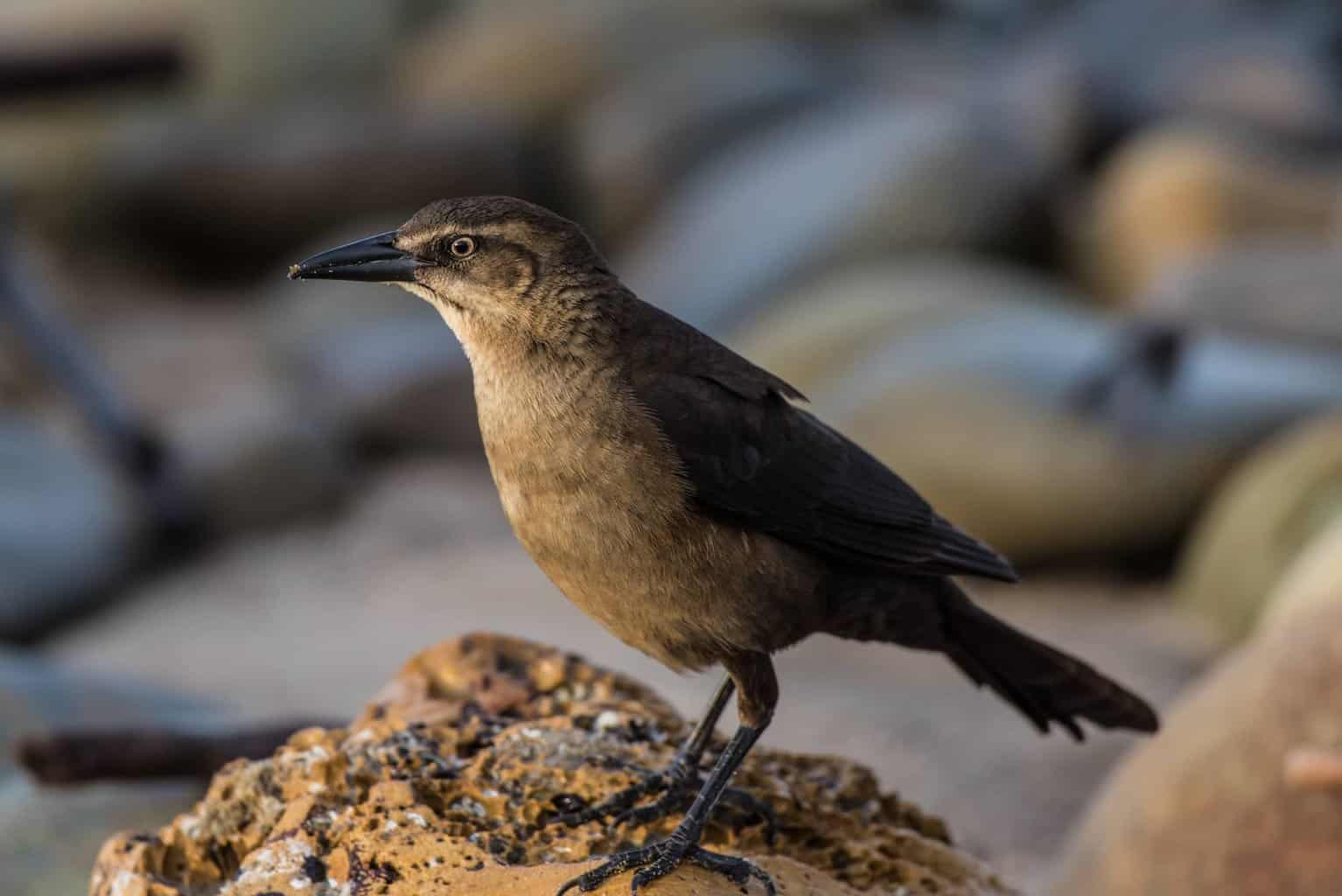
- Quiscalus mexicanus
- Length: 15—18 in (38—46 cm)
- Weight: 7.2—9.3 oz (203—265 g)
- Wingspan: 18.9—22.8 in (48—58 cm)
Color pattern: Male great-tailed grackles have black bodies and iridescent feathers. Their eyes are a striking yellow. Females are dark brown and have buff throats and a stripe above their eyes.
The great-tailed grackle’s name comes from the impressive, oversized tail. The bird itself is medium-sized, but the tail is huge. Grackles also have a complex song that hits many different notes.
These loud, social blackbirds flock in huge groups. Males find a perch during mating season and fluff themselves up to look even larger and more impressive. They spread their wings and tail and flutter while calling for a mate.
Orchard Oriole
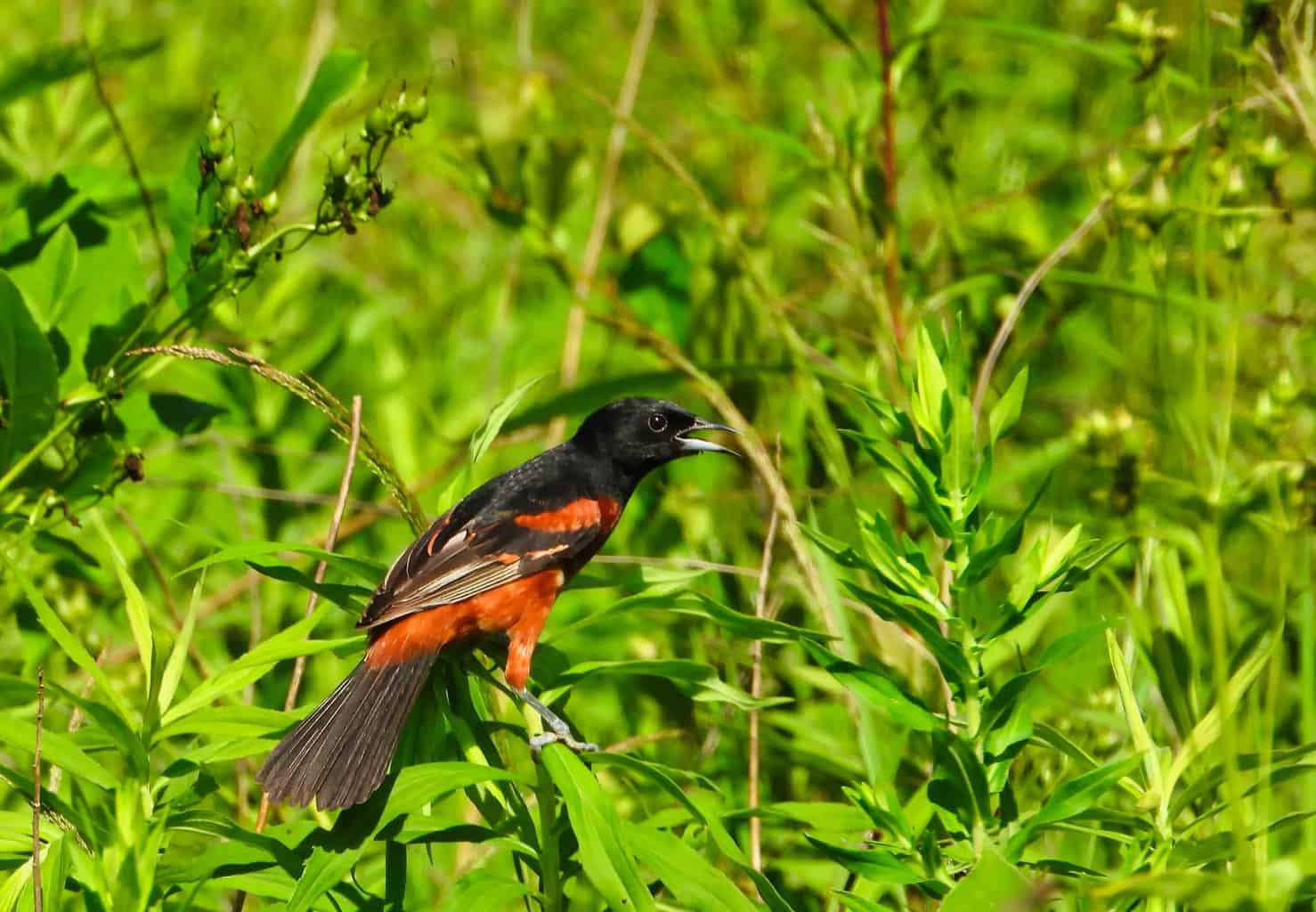
- Icterus spurius
- Length: 5.9—7.1 in (15—18 cm)
- Weight: 0.6—1.0 oz (16—28 g)
- Wingspan: 9.8 in (25 cm)
Color pattern: Orchard orioles have black heads and throats, with a reddish-brown patch that starts where their wing bends.
Females have no black on them; instead, they are greenish-yellow in color. They have two white wing bars.
Orchard orioles are the smallest blackbirds you will find in Kansas. They are somewhat difficult to attract to birdfeeders, as they prefer to spend their time on the tops of trees, rather than gathering food from feeders or the ground.
In Kansas, they can be spotted in small groves of trees, such as orchards, or alongside rivers.
Baltimore Oriole
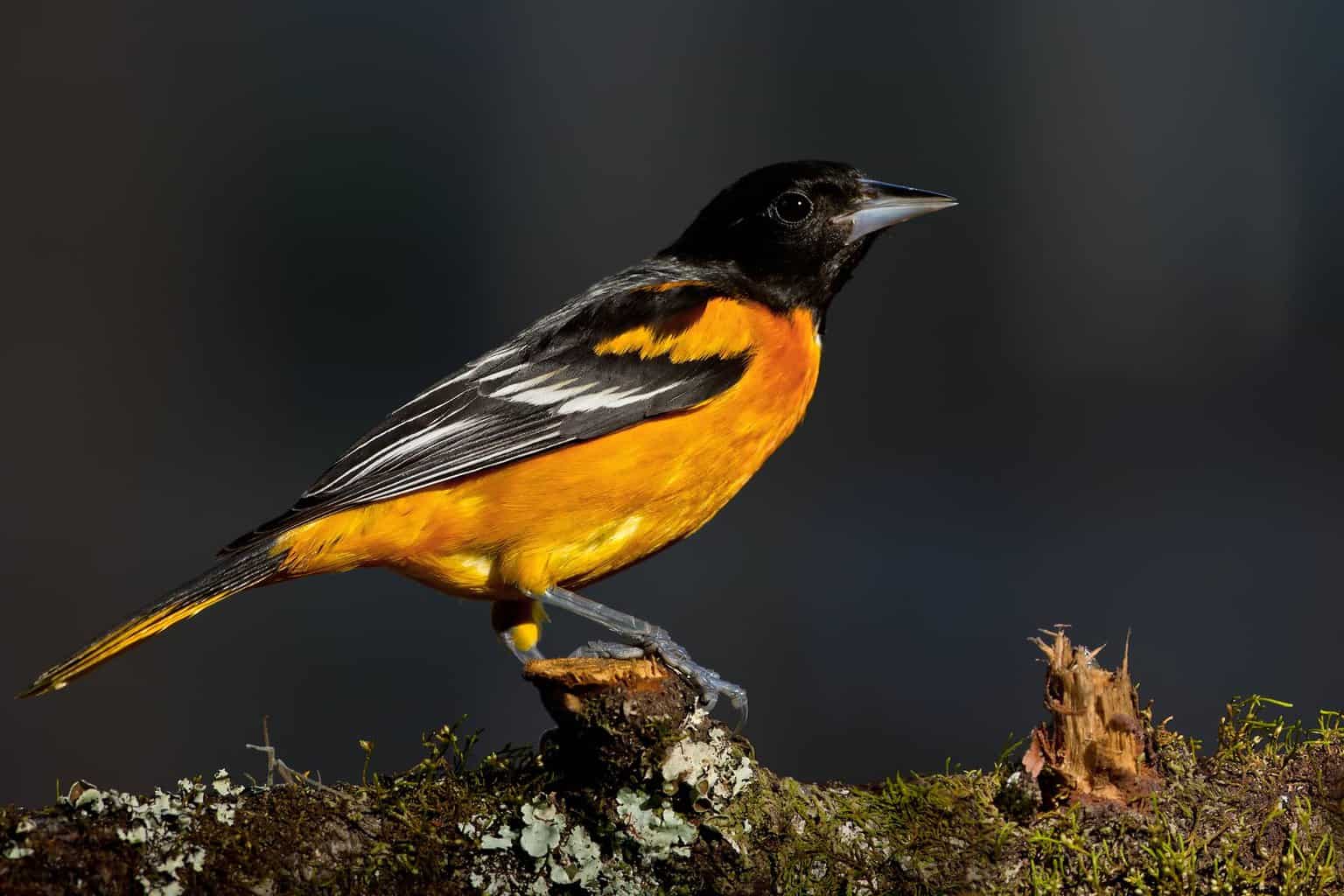
- Icterus galbula
- Length: 17–22 cm (6.7–8.7 in)
- Weight: 33.8 g (1.19 oz)
- Wingspan: 23—30 cm (9—12 in)
Color pattern: Male Baltimore orioles are bright orange, with a black head, black beak, and black wings. Females are more muted in color, with yellow-orange and dark grey feathers. Males have one white wing bar, whereas females have two white wing bars.
The Baltimore oriole is a beautiful and popular bird. They are the most frequently spotted oriole in Kansas and can be seen throughout the year.
They partake in an unusual habit called “gaping,” where they stab their bills into fruits and berries, then open their bills to access the interior fruit juices.
Rusty Blackbird
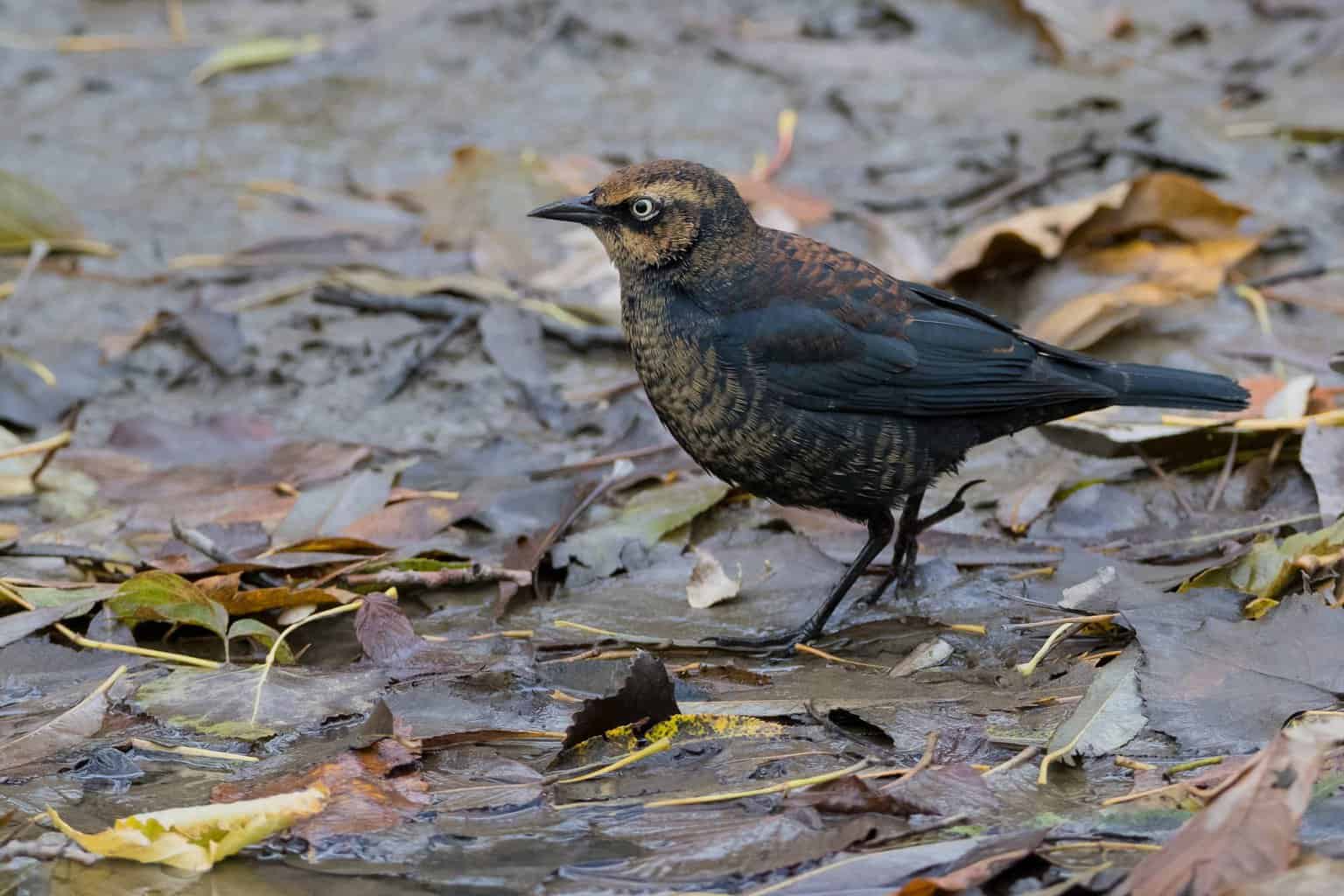
- Euphagus carolinus
- Length: 22—25 cm (8.5—9.8 in)
- Weight: 60 g (2.1 oz)
- Wingspan: 36 cm (14 in)
Color patterns: Male rusty blackbirds look slightly different depending on the season. Males in winter have rust-colored tips of their feathers. Females are similar in appearance but have a grey-brown body. During the breeding season, males’ feathers turn black and are both dark and glossy.
Rusty blackbirds are water-loving creatures! Unfortunately, they have experienced such significant population loss that they are now considered to be a threatened species.
If you are lucky enough to see one in Kansas, it will probably be somewhere in swampy or wetland areas.
Rusty blackbirds don’t just get their name from their rust-colored feathers. They also have a song that sounds like the creaking of a rusty hinge.
Hooded Oriole
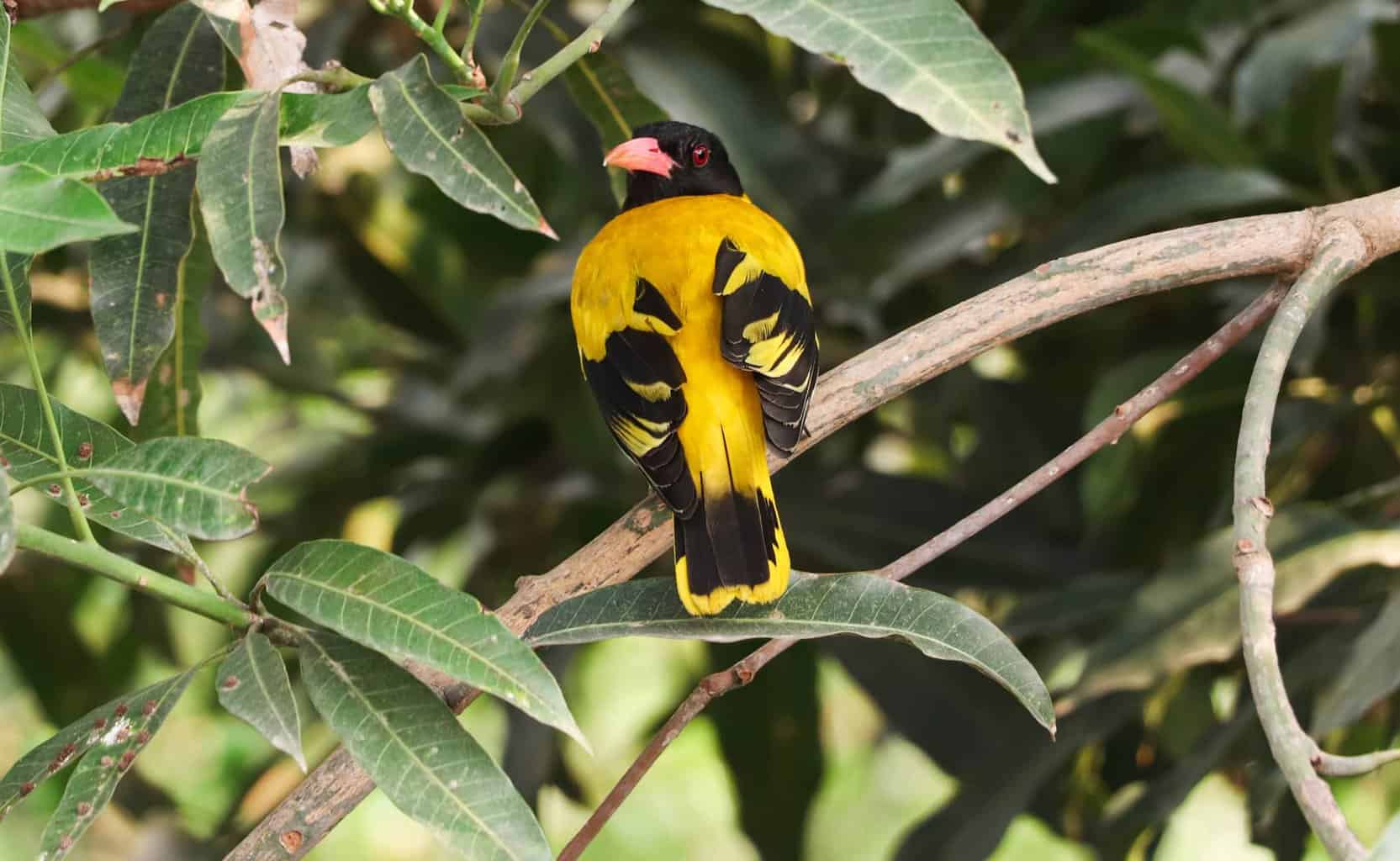
- Icterus cucullatus
- length: 112—128 cm (7—8 in)
- Weight: .86 oz (24.38 g)
- Wingspan: 29—30 cm (11.25—12 in)
Color pattern: Male hooded orioles are orangish-yellow in color, with black wings, faces, backs, and forked tails. Females are olive-green and have yellowish underwings. Both males and females alike have two white wing bars.
Hooded Orioles are excellent at mimicking the sounds of birds around them.
They are considered to be rare in Kansas, but they have been spotted by attentive birdwatchers in the state.
One of the reasons you might not spot many hooded orioles in Kansas is that they prefer to nest in palm trees, and of course, Kansas is too cold for palm trees to thrive.
What Can You Do About Blackbirds?
Kansas is home to a thriving bird population. We have hawks, owls, hummingbirds, woodpeckers, and so many more fascinating birds.
We know that blackbirds can be an irritation if you are dealing with aggressive varieties who are scaring away the other birds you hope to see in your Kansas backyard.
Blackbirds are an important part of the avian ecosystem, and they can be fascinating to watch.
Other than rare exceptions (like the European starling), the vast majority of Blackbirds are protected by the Migratory Bird Treaty Act, which means you can’t harm them or their eggs in any way.
However, you are permitted to deter problematic birds from your property.
Some useful deterrents include clearing your yard of attractive fruits, berries, and spilled birdfeed. You may also try bird netting, plastic animal decoys, noisemakers, and even helium balloons to frighten away blackbirds.
Note: Please be careful with anything you use to avoid harming the environment or wildlife.
We hope you get to enjoy the diversity of birds in Kansas, including the plentiful assortment of Icterids that we have covered here!

